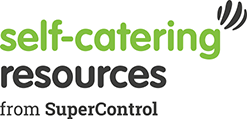Do you send out e-newsletters? An e-newsletter is preferred over a print option because there are no printing or postage costs, it is easy and straightforward to do (e.g. you could use MailChimp) and it is more environmentally friendly. A good booking and management system for your self-catering accommodation will enable you to collect information from not just your guests but also people who enquire but don’t book. When you have their contact details, writing and sending regular communication has many benefits that can lead to getting more bookings; and a newsletter is a friendly and informative way to achieve just that. Here’s why:
1. Increase your enquiry conversion
Staying in touch reminds people who considered booking a stay (but didn’t) that you are still here, what you can offer them, and just what they are missing. You already provide accommodation that appealed initially, but something stopped them from placing a booking in the past. Maybe that barrier has now been removed, but they won’t know that if you don’t tell them. A newsletter provides up-to-date news and information about any developments, keeping everyone in the know.
2. Provide a reason to return
Increasing engagement with guests past, present and future builds relationships and keeps the routes of communication open. When you make improvements to your property, or add something new, a newsletter provides the perfect platform to tell people about it. It helps build your reputation as a forward thinking, receptive person / business if you can say e.g. following the feedback we received from guests that the en-suite shower is disappointing we have installed brand new power showers in all the bathrooms in each of our cottages; and our guests are loving them! Include a photo of the bathroom makeover to show off the work that has been done. The same applies to news and developments in your local area as well – e.g. if a new adventure playground opens nearby, or the local leisure centre gets a revamp, or maybe your local pub has won an award for it’s outstanding locally-sourced food – these are all reasons for past guests to book a return stay, to sample the new things a holiday at your property has to offer.
3. Increase traffic to your website
Sending a regular newsletter gives you the opportunity to link to your website. As well as directing people straight to your booking pages or late availability page, you can also link to articles. This will encourage you to write regular posts which Google loves, so it improves your SEO too.
4. New material for your social media pages
Each time you send a newsletter, you can schedule posts to your social media pages to further increase awareness. Tweet that you’re adding the final touches to this months newsletter, provide teasers about what the next issue includes, then when you do send it out, post a link to your newsletter on Google+, Facebook, Twitter and even LinkedIn if you use it. This works both ways, you can direct people to your social media pages and website from your newsletter, and direct people to your newsletter from your social media pages and website too. Encourage involvement and feedback from your audience. Ask questions to encourage engagement: What’s their favourite feature in the latest edition? What do they think of the new design / questionnaire/ quiz etc? What suggestions do they have / what would they like to see you include in future editions?
5. Fill those gaps
If you have availability that you want to fill newsletters could work to bring in those bookings. This works well if you have had a last minute cancellation, or during the shoulder season when things quieten down. Each newsletter could focus on what’s on at this time of year, from Christmas markets to pantomimes, to the best places to get a bowl of hearty home-made soup after a blustery winter stroll on the beach. Make it seasonal and keep it fun to show people there is a reason to come visit at any time of the year.
Top tip: Try to keep the tone of your newsletters friendly and chatty and avoid in-depth, lengthy pieces which may be overwhelming to the reader. Break up the content into attention-grabbing, short snippets (linking to further information as mentioned in #3 where necessary), so your recipients can see what’s covered at a glance.
If you already send a newsletter do you have any tips to share with our other readers? If this post has made to want to give it a go, we’d love to know how you get on – keep us posted!




